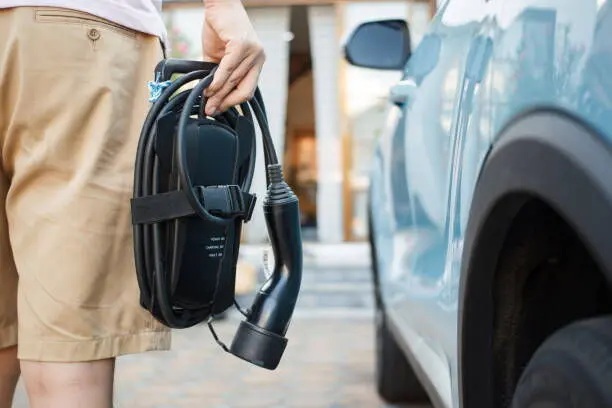Introduction
Topper Company, a leading EV charger manufacturer in China, provides dependable electric vehicle charging stations and comprehensive solutions.
Electric vehicles (EVs) are revolutionizing transportation, but for many new owners, one question remains: how do I keep my car charged when I’m away from home or far from public chargers? Portable EV chargers offer an elegant solution.
These compact, easy-to-carry devices let you recharge your EV wherever there’s a compatible power outlet—whether at home, on a road trip, at work, or even a remote cabin. With the global EV market booming, portable chargers are quickly becoming essential for flexible, worry-free electric driving.
This guide explains how portable EV chargers work, their benefits, how to choose the right one, and why they’re critical to the growing EV ecosystem.
What Is a Portable EV Charger?
A portable EV charger is a compact charging unit designed for maximum mobility and ease of use. Unlike fixed wall chargers requiring installation, portable chargers plug into standard outlets and connect directly to your EV.
Key components include:
- Control Box: Regulates power flow from the outlet to your vehicle.
- Power Cable: Connects to a 120V or 240V outlet.
- Connector Plug: Usually SAE J1772 in North America, with adapters available for Tesla vehicles.
Small enough to store in your trunk, portable chargers let you top off your battery anytime, anywhere.
How Do Portable Chargers Work?
The charger draws electricity from an outlet, converts it to the appropriate voltage and current, and safely transfers it to your EV’s battery.
Steps include:
- Plug into Power Source: 120V for Level 1 or 240V for faster Level 2 charging.
- Power Regulation: Control box manages safe, steady current flow.
- Vehicle Connection: Connector locks into your EV’s port.
- Charging & Monitoring: Lights, displays, or apps keep you informed in real time.
This setup frees you from relying solely on fixed stations or public chargers.
Benefits of Portable EV Chargers
- Charging Flexibility: Charge anywhere there’s a compatible outlet—great for road trips, camping, or visits without dedicated chargers.
- Independence from Public Infrastructure: Ideal for rural areas or older buildings lacking EV stations.
- Cost-Effective: Typically cheaper and easier than installing home Level 2 chargers; shareable among vehicles.
- Ease of Use: No installation required; plug-and-play convenience.
- Compact & Lightweight: Designed for travel and easy storage.
- Emergency Backup: Peace of mind if you run low far from a public charger.
Charging Levels Explained
- Level 1 (120V): Adds 3–5 miles/hour; slow but reliable backup charging.
- Level 2 (240V): Adds 12–30 miles/hour; optimal for daily use and travel stops.
- Level 3 (DC Fast Charging): Rapid commercial charging; not supported by portable units due to infrastructure needs.
Tips for Effective Use
- Know which outlets are available—240V is faster.
- Match charger amperage with your EV’s limits.
- Use heavy-duty, outdoor-rated extension cords if needed.
- Monitor charging via built-in displays or apps.
- Store your charger safely to prolong lifespan.
Choosing the Right Portable Charger
Consider:
- Amperage & Output: Higher amps = faster charging, but check your vehicle and outlet compatibility.
- Cable Length: Longer cables offer flexibility but add weight.
- Plug Compatibility: Ensure it fits your available outlets.
- Portability: Compact, lightweight designs with storage cases are ideal for travel.
- Weather Resistance: Outdoor-rated chargers stand up to the elements.
- Safety Certifications: Look for built-in protections and compliance with local standards.
The Role of Portable Chargers in the EV Ecosystem
Portable chargers don’t replace fixed stations but fill important gaps:
- Apartment dwellers without permanent chargers can use available outlets.
- Fleets can keep vehicles topped off between routes.
- During emergencies or power disruptions, paired with generators, portable units provide crucial backup.
- Road trippers and campers gain charging freedom at remote spots.
The Future of Portable Charging
As technology advances, portable chargers will become faster, smarter, and more user-friendly—featuring app controls, automatic adjustments, and real-time data tracking. They will be vital in expanding EV adoption, especially where fixed infrastructure is still developing.
Conclusion
A portable EV charger is more than an accessory—it’s a flexible, convenient, and empowering tool for today’s EV driver. Whether commuting, adventuring, or preparing for emergencies, portable chargers put charging power in your hands, helping you stay charged no matter where the road takes you. Learn more about Google SEO.





Comments